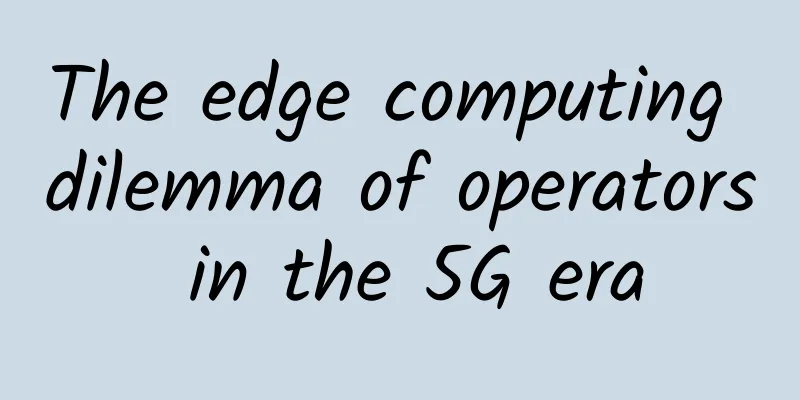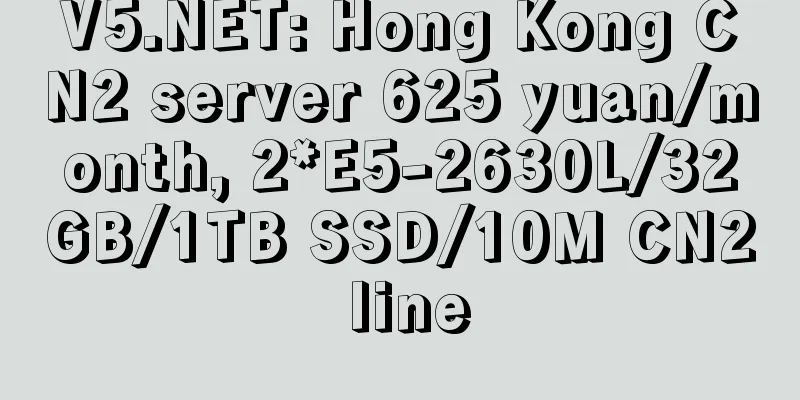The edge computing dilemma of operators in the 5G era

|
With the continuous development of 5G, 5G will be widely used in all walks of life in the future. The emergence of the new "5G + edge computing + AI" model has also prompted operators to help vertical industries achieve digital and intelligent transformation. However, this has also brought four new challenges to operators' bearer networks. In order to build a 5G MEC Ready bearer network, operators need to solve six key problems. MEC is the key to digital transformation of industries in the 5G era Application localization (no data transmission outside the campus), high-bandwidth content distribution, and low-latency computing localization all promote the migration of service content, applications, and computing to the edge, thereby promoting the development of multi-access edge computing (MEC) and the downward migration of 5G core networks. Figure 1 Migrating services to the edge promotes the development of MEC and the downward migration of 5G core networks The 5G core network adopts a flexible architecture that separates the user plane function (UPF) and the session management function (SMF). In this way, the UPF can be flexibly deployed on demand. One SMF can manage multiple UPFs at the same time while ensuring the high performance of the 5G core network. 5G brings many new advantages to MEC, including:
Four major challenges facing operators’ 5G MEC bearer networks Traditional 4G bearer networks, because traffic is mainly north-south, many operators use L2+L3 methods, which are no longer suitable for 5G MEC traffic localization requirements. 5G MEC poses four new challenges to operators' bearer networks: Figure 2 New challenges for operators’ 5G MEC bearer networks
Six key issues for operators’ 5G MEC network architecture model and network construction Figure 3: Operator bearer network architecture model from the perspective of MEC The bearer network architectures of different operators are diverse. The following sections introduce the bearer network architecture model from the perspective of MEC in Figure 1-3. The above 5G MEC network communication model requires operators to solve the following six key issues when building a MEC bearer network: (1) Shortest MEC access network: Operators need to provide the shortest path for the N3 interface service flow from gNB to MEC UPF. In the on-site MEC mode, the N3 interface service flow needs to be forwarded to the MEC directly through the mobile bearer router in the campus. In addition to ensuring low latency and saving bandwidth on the operator's network, this also ensures that the enterprise's critical service data does not leave the campus, as shown in Figure 4. This requires the MEC access router to forward data packets through the shortest path. To this end, the MEC access router is required to provide the necessary routing functions (L3 to edge). Figure 4 MEC requires a low-latency access network (2) Low-latency slicing: To meet the requirements of MEC applications for low latency, high security, and high reliability, the operator's bearer network needs to provide low-latency slicing network services for enterprise users. The MEC slice network includes gNB, mobile bearer network (between gNB and MEC), and UPF. That is, all network elements that the enterprise service flow passes through to MEC. The fewer network elements the data packet passes through, the simpler the slice and the shorter the transmission delay. (3) MEC multi-point communication: The business flows between MEC and the 5G core network (N4 and OAM interface), MEP management platform, and other MECs are all multi-point to multi-point communication modes and require L3 VPN support. The MEC bearer network needs to provide L3VPN functions on the entire network (including the access network); that is, connect the L3 VPN to the network edge. In addition, L3 VPN needs to span multiple network segments, such as the metropolitan area network and the backbone network. Compared with the 4G bearer network, the MEC bearer network is much more complex in terms of the number of network elements (a large number of UPFs are moved down) and network coverage (from access to backbone). Therefore, a flexible and powerful L3 VPN is needed to support multi-point communication, as shown in Figure 5. Figure 5 Management and control service interface across multiple networks (4) Communication functions integrated in the router of the MEC system: Small and micro MECs are common in 5G MEC. Due to cost and communication requirements, MEC usually uses a one-layer integrated network model (as shown in Figure 6), while data centers generally use a complex multi-layer network architecture. The router of MEC needs to provide all the necessary communication functions, such as intercommunication between devices in MEC, reliable connections at Layer 2 and Layer 3 between VMs, intercommunication and reliable communication with the external IP network (IP RAN), and edge cloud synergy. UPF as a network function virtualization (NFV) can run on multiple VMs to improve performance and reliability. MEC routers need to provide equal-cost multi-path routing (ECMP) for the current high-performance UPF to achieve 16-path load balancing. Figure 6 MEC network model (5) Edge-cloud synergy: MEC UPF is a data plane that is sent down to the 5G core network, and the application in MEC is a real-time processing unit that is sent down to the cloud service. Both require the operator's bearer network to provide reliable cloud-edge communication capabilities, and also need to support edge-cloud collaboration in terms of automated deployment and operation and maintenance. The cloud-edge collaboration of UPF can refer to the bearer solution of the telecom cloud. (6) Secure intercommunication between the two networks: The operator's MEC network needs to be interoperable with the enterprise network so that the enterprise can integrate 5G communication capabilities and MEC applications into the enterprise's business system. Currently, the router in the MEC is generally used to interoperate with the enterprise network. Network security is a matter of great concern to both the enterprise network and the operator network, and a firewall-based network security solution is required. Summarize 5G mobile communication systems have made many improvements in supporting vertical industries, such as low-latency wireless communications, flexible core network architecture, and super uplink, which are the main features that distinguish them from 4G. MEC is a new model for operators to help vertical industries become digital and intelligent. MEC is the beginning of the widespread distribution of intelligence on the network. In the future intelligent world where everything is connected, intelligence based on edge computing will be scattered all over the network. The 4G bearer network is built based on the 2C (for ordinary mobile phone users) concept. The traffic model is a simple north-south, wireless core network centralized model, and does not consider the MEC network requirements for vertical industries. Therefore, the construction of the 5G MEC bearer network is not a simple bandwidth upgrade of the 4G network. |
<<: 10 pain points: How IT departments face edge computing
Recommend
IPv6 brings huge opportunities for managed service providers
For MSPs, helping customers transition to IPv6 co...
[Black Friday] SaltyfishTech: 499 yuan/year-4 cores/4GB/50G SSD/1TB@150Mbps/Germany 9929 line
SaltyfishTech also released a special Black Frida...
Maxthon Hosting: 600 yuan/month Hong Kong Dedicated Server-E5-2630v2/16GB/480G SSD/2IP/CN2 GIA Line
The tribe has shared information about Aoyo Zhuji...
Will the 6G market size exceed $1 billion in 2028? What are its typical features and potential applications?
Industry experts point out that 6G will achieve s...
Operators’ deployment of the Metaverse: a good business that will not lose money whether you win or lose
[[437233]] Recently, the hottest word is naturall...
Hawking: Automation and artificial intelligence could replace 77% of jobs in China
[51CTO.com original article] World-renowned physi...
Seven types of networks and their use cases
A computer network is a system of interconnected ...
The U.S. military attaches great importance to it! 5G private network is about to be implemented at the U.S. Navy base
Recently, Hughes Network Systems (Hughes) announc...
Misaka: $44/year KVM-2GB/32G NVMe/2TB/Germany (optional CN2)
Misaka is a Chinese merchant (the same company as...
Omdia: Traditional PON equipment vendors face three major challengers
Recently, Julie Kunstler, senior analyst at Omdia...
Fifteen best practices for a successful data center migration
Data center migrations are often complex and risk...
4G changes life, 5G changes society, so what will 6G change?
The answer is: 6G will change the telecommunicati...
5G network frequency band allocation is in turmoil again. Will the country allow spectrum resource auctions?
The recently revised "Radio Management Regul...
5G commercialization process accelerates operators to promote network intelligent transformation
The new round of technological changes continues ...
Wi-Fi 7 is starting to emerge: speeds up to 30Gbits per second
Wi-Fi 6 is just beginning to become popular, and ...









